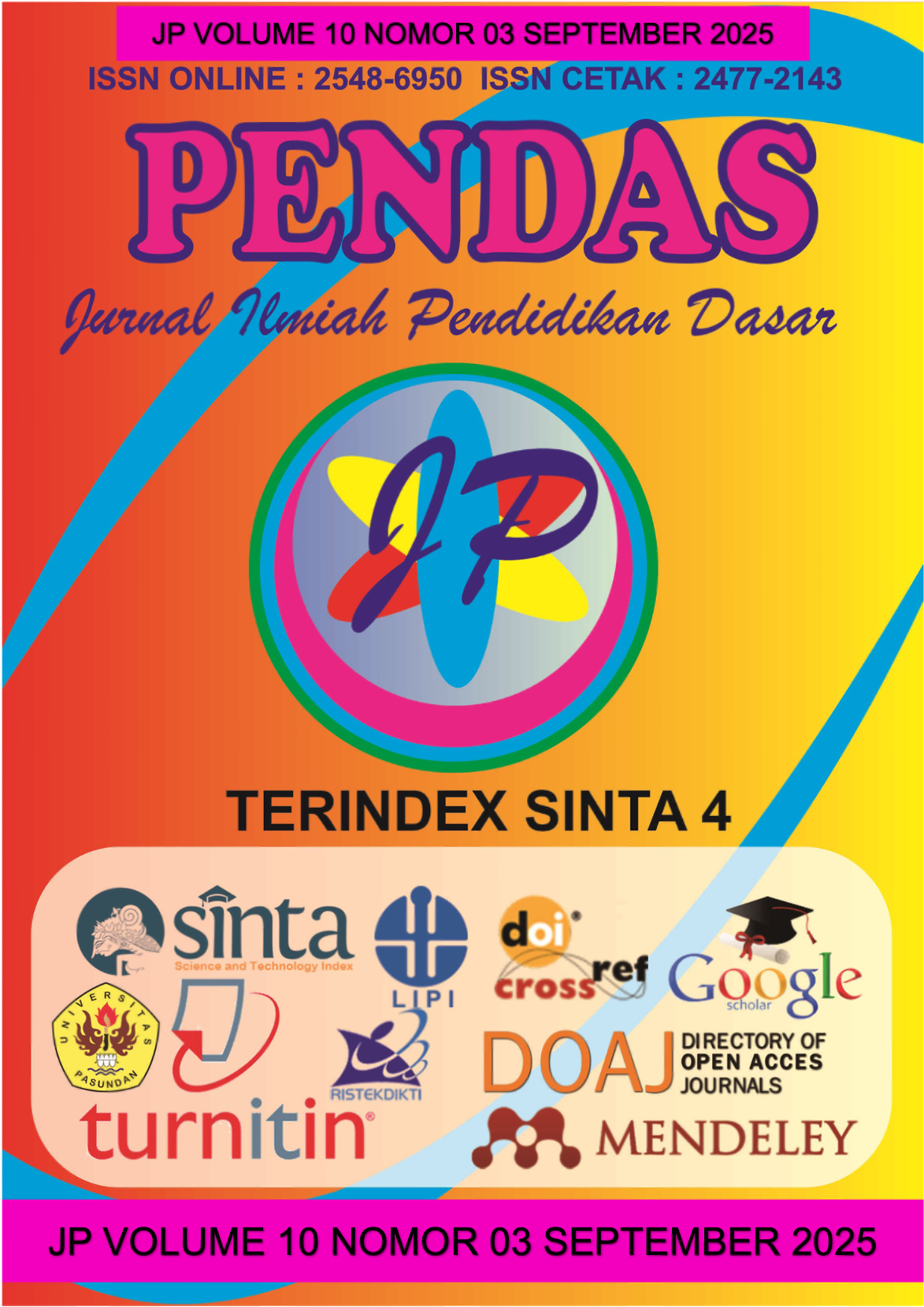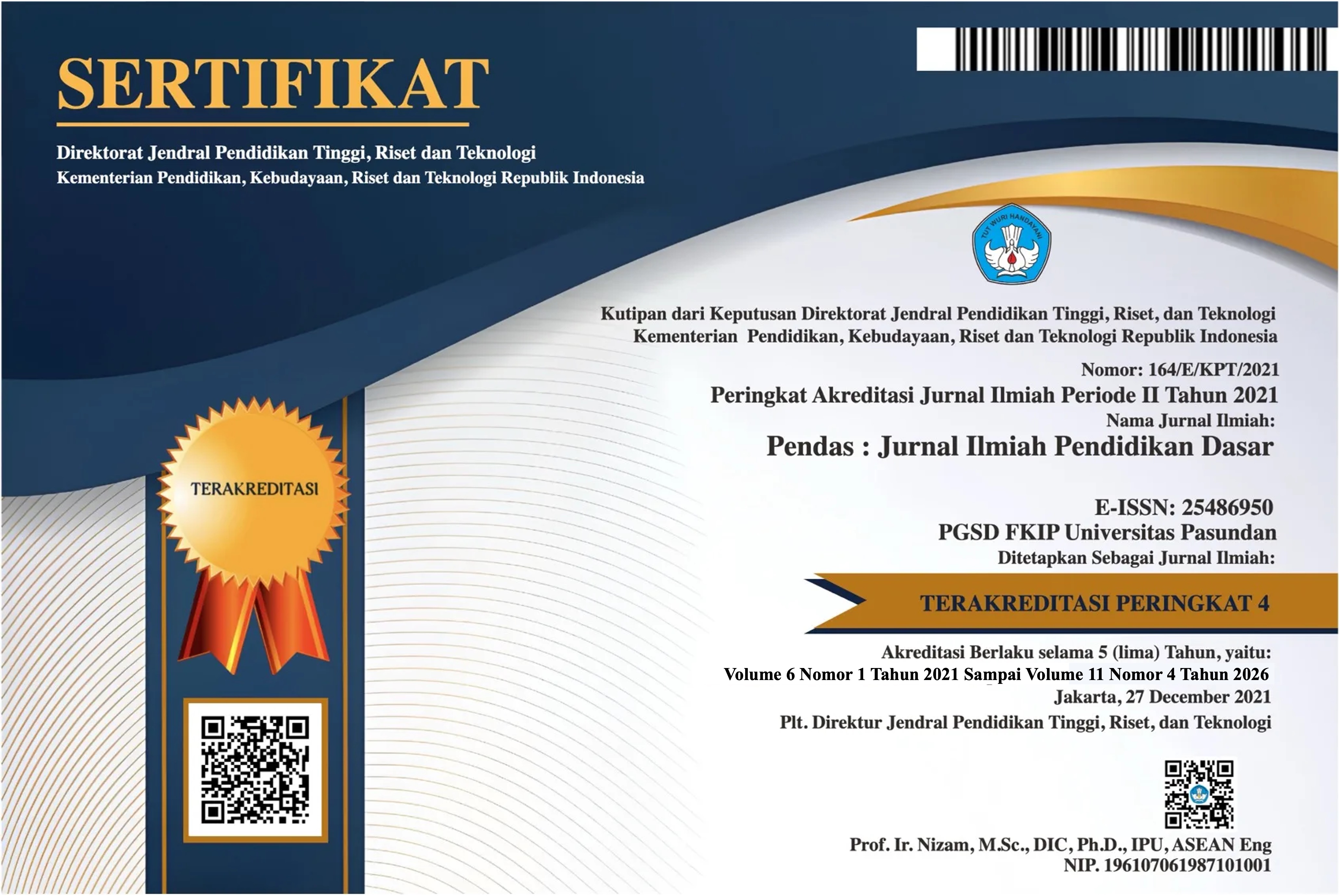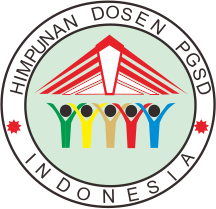EFFECTIVENESS OF GUIDED QUESTION TECHNIQUE IN ENHANCING THE WRITING ABILITY OF GRADE EIGHT STUDENTS AT SMP NEGERI 1 SIANTAR
DOI:
https://doi.org/10.23969/jp.v10i03.33156Keywords:
Guided Question Technique, Writing Ability, Recount Text, Quasi-ExperimentalAbstract
This research investigated the effectiveness of the Guided Question Technique in enhancing the writing ability of eighth-grade students at SMP Negeri 1 Siantar during the 2025/2026 academic year. The study employed a quantitative approach using a quasi-experimental design. A total of 62 students were selected as the sample, divided into two groups: class VIII-2 as the experimental group, which was taught using the Guided Question Technique, and class VIII-1 as the control group, which received instruction through the conventional technique. Data collection was conducted by administering pre-tests and post-tests in recount text writing, and the results were analyzed using the t-test formula. The pre-test results revealed that the experimental group obtained an average score of 70.03, while the control group reached an average of 71.16. After the treatment, the post-test results indicated a significant improvement, with the experimental group achieving an average score of 79.90 compared to 74.94 for the control group. The data were gathered using a writing test as the primary research instrument. The t-test analysis generated a t-observed value of 3.551, which was greater than the t-table value of 1.671 at the 5% significance level. These findings demonstrated that the Guided Question Technique significantly improved students’ writing performance. Specifically, it enhanced their ability to organize ideas logically and to construct recount texts in accordance with the generic structure. Therefore, the Guided Question Technique can be regarded as an effective and practical instructional strategy to foster students’ writing competence in junior high school, offering teachers an engaging alternative to conventional technique.
Downloads
References
Abdul Fattah Nasution, Setia Ningsih, Mona Febrica Silva, Leli Suharti, & Jekson Parulian Harahap. (2023). Konsep Dan Implementasi Kurikulum Merdeka. Competitive: Journal of Education, 2(3), 201–211.
Andersen, Mark and Andersen, Text Types in English 1, (Yara: Macmillan Education Australia PTY LTD, 1997), p. 48
Anderson, L. W., & Krathwohl, D. R. (Eds.). (2001). A taxonomy for learning, teaching, and assessing: A revision of Bloom's taxonomy of educational objectives. New York: Longman.
Ary, D., Jacobs, L. & Walder, D. A. (2014). Introduction to research in education (9th ed). USA: Wadsworth
Brown, D. H. (2000). Principles of Language Learning and Teaching. New York: Longman.
Brown, H. Douglas. (2007). Principles of Language Learning and Teaching, Fifth Edition. NY: Pearson Education
John W. Best and James V. Kahn, Research in education, Seventh Edition, (New Delhi: Prentice-Hall, 1995), p. 218
Dumais Fitri, (2013). An analysis on Students Ability and Problems in Writing Recount Texts at grade VIII at SMPN 29 Padang. Journal of English language teaching: Vol 2, No.1 serie A
Erma Velanda, The Effectiveness of Guided Questions towards Students’ Writing Skill of Descriptive Text, Skripsi of UIN Syarif Hidayatullah Jakarta: 2015. Unpublished.
Gay, L. R., Mills, G. E., & & Airasian, P. (2016). Educational research: Competencies for analysis and application (9th Ed.). London: Pearson Education, Inc.
Gibson, S. A. (2008). Guided writing lessons: Second-grade students' development of strategic behavior. The Reading Teacher, 62(4), 324–333.
Gordon Taylor, A Student’s Writing Guide How to Plan and Write Successful Essay, (New York: Cambridge University Press, 2010), pp. 28-33.
Graham King (2003) Collins Good Writing Guide: The Essential Guide To Good Writing
Guided Questions is effective to be used toward students’ procedure text writing ability" (Hariyanto, 2018, p. 77)
Hairston, Maxine. Contemporary Composition, Short Edition. Boston: Houghton Mifflin Company, 1986.
Harmer, J. (2001). The Practice of English Language Teaching.London: Longman
Harmer, J. (2004). How to Teach Writing. Harlow: Longman.
Hornby, A. S. (2000). Oxford Advanced Learner’s Dictionary of Current English (6th ed.). Oxford: Oxford University Press.p 422
Husna, A., Multazim, A. (2019). Students' difficulties in writing retelling texts in inclusive classes. LET: Journal of Linguistics, Literature and English Language Teaching. 9(1). 52-76.
Indriani, R., Maulida, N., & Sari, N. (2019). The influence of the guided questions technique towards students’ writing skills of descriptive text in the first semester of the eighth-grade students of SMP Perintis 2 Bandar Lampung in the academic year of 2017/2018 (Undergraduate thesis, UIN Raden Intan Lampung).
James C Raymond. Writing (Is unnatural Act). (New York: Harper & Row Publisher. 1980)
Khotimah. 2008, The Student Problems and Their Strategys in Essay Writing Mode by the Sixt Semester Student of English Education Program STAIN Tulungagung
Knapp, P. and Watkins, M. (2005). Genre, Text, Grammar: Technologies for teaching and assessing writing. Sydney: University of South Wales Press
Linda Flower and John R. Hayes (1981). A Cognitive Process Theory of Writing.Vol. 32, No. 4, (Dec., 1981), pp. 365-387
Merry Susanti Lassa, Teaching Recount Paragraph Writing by Using WH-Questions to the Eighth Grade Students of SMP Negeri 2 Suhaid, Journal of West Kalimantan Scholars, Vol.1, Number 1, 2014, pp. 38-50.
Nickerson, R Perkins, D & Smih. E. (l985) The Tenching of Thinking. New Jersey: Lawrence Erlbaum.
Nunan, David. (2003). Practical English Language Teaching. Singapore: Mc Graw-Hill Company
Nurmala Hayati (2020), The Effect of Guided Writing on Students’ Writing Performance (A Case Study) Student of Fakultas Tarbiyah dan Keguruan Department of English Language Education
Parsons, S. (2001). Guided writing instruction: Strategies to help students become better writers. Portage & Main Press.
Rass, R. A. (2001). Integrating Reading and Writing for Effective Language Teaching. Retrieved on November, 10th 2012.English Teaching Forum, Vol.39 (1): 1-3
Robert Keith Miller, Motives for Writing, (New York: Mc Graw Hill: 2006), p. 47. 12 Ibid, p. 98. Ibid, p. 173.Ibid, p. 241. Ibid, p. 381. Ibid, p. 451.
Sue Stubbs. Targeting Text. Sydney: Blake Eductaion. 2010. p.9-10
Sugiyono, (2022) Quantitative research methods. Ed.2. Bandung jl. Gegerkalong Hilir No.84: Alfabeta.
Sugiyono, Metode Penelitian Kuantitatif Kualitatif dan R & D (Bandung: Alfabeta, 2019), p.275.
Sugiyono, Introduction to Education Statistics, (Jakarta: Rajawali Pers, 2016), p.314
2013 Curriculum Core Team. 2013. Basic Competencies of Junior High School (SMP)/Madrasah Tsanawiyah (MTs). Ministry of Education and Culture: Department of Education and Culture.
Traver, R. 1998. What is A Good Guiding Question? educational Leadership, 55 (6), 70-73
Brown, H. D. (2004). Language assessment: Principles and classroom practices. Longman
Lunsford, A. A. (2021). The St. Martin's Handbook (Paper Version) (9th ed.)
Napitupulu, S., & Kisno. (2014). Teaching English as Foreign Language (TEFL1). Jakarta: halaman Moeka
Axelrod & Cooper's Concise Guide to Writing Bedford/St Martin's, Oct 21, 2011 - 592 pages
Gordon Taylor. (2019) A Student’s Writing Guide: How to Plan and Write Successful Essays Cambridge University Press
Desti Sri Wahyuni et al., “Using Guided Questions Technique (GQT) to Improve Students Writing Skill”.2024. unpublished
Liana Fajarani, “The Effect of Using Photographs as a Media-Guided Question Technique on Writing Ability at the Tenth Grade of SMAN 2 Sekampung East Lampung”.2020unpublished
Downloads
Published
Issue
Section
License
Copyright (c) 2025 Pendas : Jurnal Ilmiah Pendidikan Dasar

This work is licensed under a Creative Commons Attribution 4.0 International License.



















